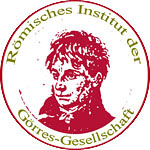Farnese-Exhibition at the Capitoline Museums
From Christian Hecht
Until 8 June only, Palazzo Caffarelli, now part of the Capitoline Museums and formerly the German Embassy, is hosting an extraordinary exhibition: ‘I Farnese nella Roma del Cinquecento. Origini e fortuna di una collezione’ - ’The Farnese in 16th century Rome. The origins and fate of an art collection’.
In fact, from the 16th to the 18th century, Palazzo Farnese housed an art collection that rivalled that of the popes. Major works such as the Farnese Bull or the Hercules Farnese were among the most important antiquities in Rome. It all began with the collecting activities of Cardinal Alessandro Farnese, who later became Pope Paul III. Raphael's portrait of the young cardinal is a centrepiece of the exhibition.
Through succession, the Palazzo and its collections passed to the kings of Naples, and Pius VI was finally forced to authorise the export of the works of art, although Alessandro Farnese, the Gran Cardinale, had decreed in his will in 1587 that they should remain in Rome.
Goethe witnessed the removal of the collections in Rome in 1786/87. In his ‘Italian Journey’, however, he only laments the loss in passing, as the removal of the collections was organised by the landscape painter Jakob Philipp Hackert, whom he held in high esteem: ‘Our fellow countryman Hackert is the first driving force behind this work. Even the Toro Farnese is to be transported to Naples and placed on the promenade there. If they could take the Carraccian Gallery from the palace, they would.’
Of course, the huge antiquities could not leave the National Museum of Naples, but well over a hundred highly significant works can currently be seen in Rome, including the Book of Hours of Cardinal Alessandro Farnese, which is now in New York, and the Cassetta Farnese, now in Naples.
- Details
- Written by: Stefan Heid
- Category: Roman notes
 Römisches Institut der Görres-Gesellschaft
Römisches Institut der Görres-Gesellschaft







